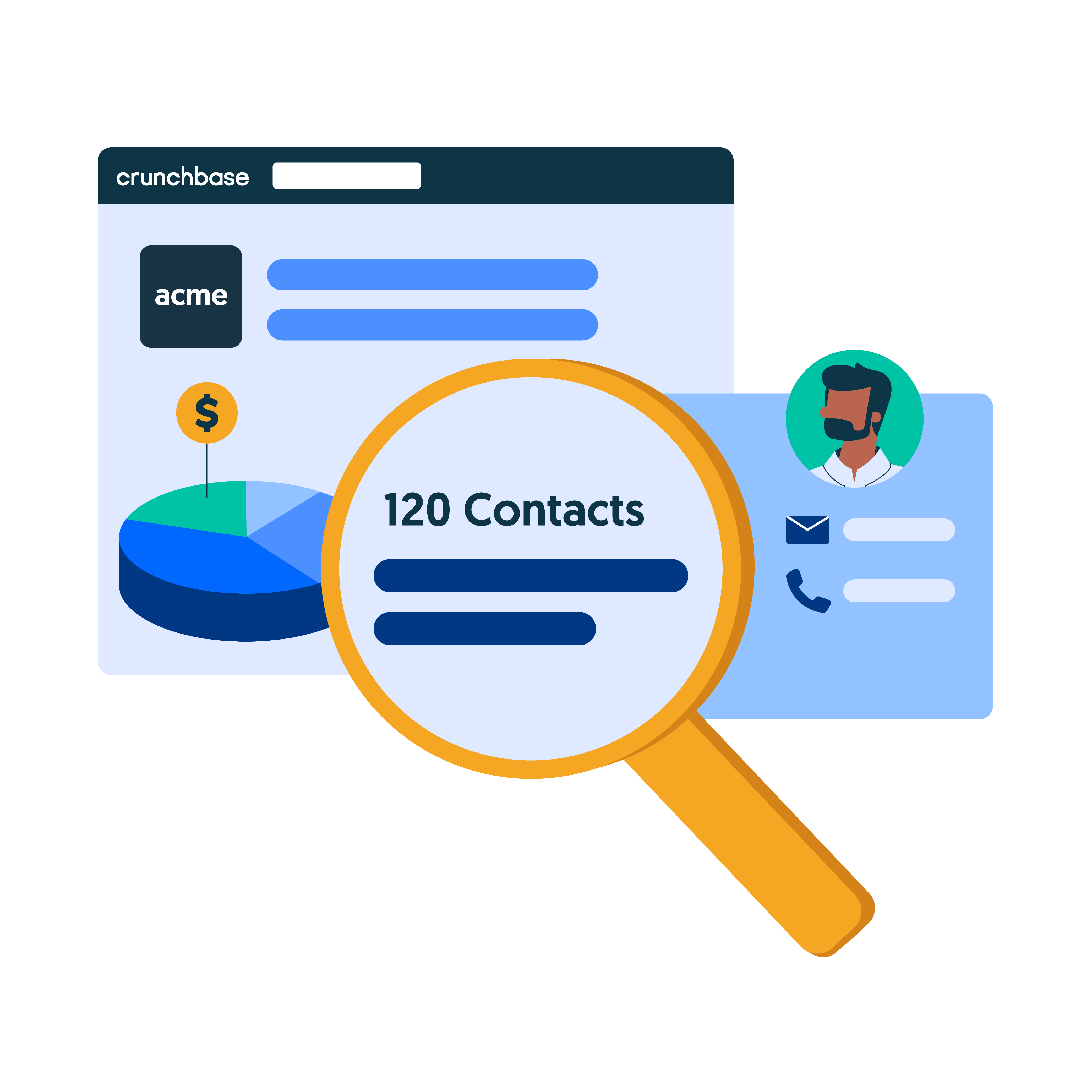COVID-19 drastically changed how non-essential businesses promote their products and services to their customers. Marketing strategies that may have been effective pre-COVID may no longer deliver the desired results now, especially as people’s habits for shopping and buying seemingly changed overnight.
Because of the changes in the lifestyles and behaviors of customers, social selling has increasingly become the go-to strategy for marketers during the new normal. Social selling involves researching, connecting and engaging with leads and customers on social media platforms. It’s similar to lead nurturing because you target, track and direct leads through the sales conversion process.
COVID-19 e-commerce grew significantly as more customers stayed home. That’s why marketers should seize this ripe opportunity to use social selling and potentially have 45 percent more sales opportunities. Read on to find out the best practices for social selling for the new normal.
Source: Super Office
10 Social Selling Best Practices
1. Choose the right channels
As a start, your content needs to be a fit for the platform you choose for your marketing strategy.
Do you need to drive traffic to your website? Blog posts may be the most effective for that goal, so you should choose a social media platform like Facebook or Twitter on which you will publish your content. Are you publishing blog posts? Do you want to publish highly visual content? Then Instagram or Pinterest may be more suited for you.
Share free and informative content on these channels to get your leads to engage and interact with your brand.
Take note that these must be channels on which you know your audience will likely be. If your customers are likely not checking Twitter or interested in following brands on that platform, you’re better off putting your resources into others instead.
A social platform cheat sheet to decide on the right platform for your brand. Source: CoSchedule
2. Update your social media profiles
Curious customers may search for your business on Google or Facebook and see old business hours or outdated prices and services. Be sure to update your social media profiles according to new business hours, policies, or any other changes required as a result of the new normal.
Source: Sales for Life
But sales representatives, marketers and all other client-facing staff need to update their professional social media profiles, as well. It was found that 77 percent of B2B buyers often first conduct research about the business and their sales reps before they even make contact. Because of this, you’ll want all representatives of your business to be as professional and presentable as possible to prospective clients.
If needed, help your customer-facing employees optimize their social profiles so they’re also vehicles for making the sale. One way to do that is to provide them assets, like social media banners, that help encourage potential customers to send them a message or email, like in the example below.
3. Focus on providing value
Successful social selling involves providing valuable and relevant content to your audience. Plus, your audience will be more encouraged to interact with your content if it’s free.
For example, the U.K.-based parcel forwarding service My UK Mailbox makes use of a blog as a channel to help inform and educate shoppers about options for online shopping. They publish articles about how to use a shipping service, what to do if international stores don’t accept your credit card, and even gift ideas for friends and family.
Customers are more inclined to engage with your content if it provides educational information. Depending on your brand persona, you can also jump in on social media trends like memes and viral content to increase your engagement and reach.
Not all content should be a hard sell or end with a pitch. It takes time to build rapport and trust among your leads. Keep providing valuable content and nurture your relationship with prospects, and the sales will come.
The Flex Company shares informative articles about women’s health.
4. Set up notifications and alerts
Since you’re keeping tabs on leads, you should know what your customers are saying about your brand and your competitors. Social listening tools allow you to monitor mentions of and feedback about your business online.
Set up notifications and alerts whenever your brand is mentioned or if a good opportunity arises. That way, you can immediately address customer concerns and provide the service they need.
You can also invest in social listening tools to help you stay on top of brand mentions while also seeing what customers are saying about your competition.
Source: All Pro Web Designs
5. Streamline your retargeting strategy
Like other sales targeting techniques, social selling takes time and effort. Set up your retargeting emails and ads to help remind users of what they were checking out so they know what’s at stake if they don’t buy.
Retargeting ads are often best for lower cost products. Source: Mighty Recruiter
Personal followup sequences and processes might also need a makeover so they’re more effective. Sales reps will often need to follow up with a prospect before they can convert. But you must also know which prospects to target and not just settle for what’s immediately available.
The best clients and the biggest sales take a long time to establish and reach. Determine whether your social selling techniques should be readjusted to target better leads so you can boost your efficiency rate and generate more conversions.
6. Double down on personalization
Reaching out to prospects with a great and personalized message is important for an efficient and interesting social selling strategy.
Make use of the personal information available on a prospect’s social media account when reaching out. Customizing your messages instead of just using generic sales scripts makes a prospect feel special.
If you already have a lot of information about your leads and customers, use it to your advantage. Build a long-lasting relationship with them by customizing your content and messages.
For example, restaurants or cafes can offer personalized DIY recipe kits of well-loved meals that customers can cook at home, while service-based companies like marketing agencies might make use of personalization tags to mention their prospects by name and company.
7. Refine and optimize your customer support
Nowadays, more customers prefer to use social media and messaging platforms to interact with businesses. As you engage on social media platforms, watch out for what buyers and consumers are saying about your business, products and services.
If a customer is unhappy with your business and posts on your social media page, you need to respond properly and address their concern. Reach out via private message about their specific complaint and offer them some reparative action steps to help turn the negative experience into a positive one.
Chat bots may be helpful for answering FAQs about your business, but great customer support involves a human touch. Equip your customer service representatives with the best ways to improve their service through social media channels. Remember to respond thoughtfully and provide helpful answers to the customer’s concerns.
8. Consistency is (still) key
Marketers have a lot of things to do aside from lurking on social media every moment of every day. But consistent posts and active engagement is important to keep a well-known presence online for your business. Sales reps on LinkedIn, for instance, should post at least once a week to keep prospects engaged with the content. It’s a persistent tactic, but it doesn’t overwhelm your leads with too many follow-ups.
Nurturing a sustainable and professional relationship with your leads and customers is a great way to establish your brand as trustworthy. Remember that what sets successful brands apart is their consistency: to keep selling, offering value, and maintaining good relationships with their customers.
Guild Education regularly shares timely content on LinkedIn.
9. Score your leads
Generating leads is just one step for your business. Assigning lead scores helps you identify which among your leads most often interact with your business online and are more likely to convert to a paying customer.
Establish a ranking system for your leads to visualize your data. You can keep track of customer behavior online and see whether a lead needs more nurturing before it converts or if a lead should be abandoned entirely. This shortens the sales process while keeping your sales team productive by only focusing on the warmest leads.
10. Track and evaluate your results
Of course, you need to keep track of trends and monitor the effectiveness of your social selling strategy. Use social media analytics tools to keep track of reach, engagement and other important KPIs you can measure for your business.
Keep checking your goals for growing your prospect list, your email list and more. What you track grows, so stay on top of those numbers so you can identify action steps that will help you reach those goals.
Source: Crunchbase
Key Takeaways
Social selling takes a lot of time but the payoff is worth it. Any skillful marketer can build a great relationship with leads and customers through social selling. Take advantage of the power of social media and watch your sales grow.
To get a headstart on your social selling strategy, check out the information available through Crunchbase.


Kevin Payne is a content marketing consultant that helps software companies build marketing funnels and implement content marketing campaigns to increase their inbound leads.






